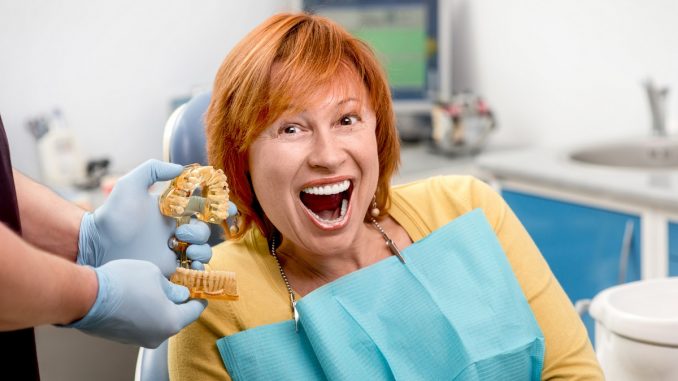
 There are certain discoveries that have changed the face of dentistry and one of them is dental implants. In Cheltenham, they have become most people’s first choice when they need to replace lost teeth.
There are certain discoveries that have changed the face of dentistry and one of them is dental implants. In Cheltenham, they have become most people’s first choice when they need to replace lost teeth.
But what makes dental implants in Cheltenham so popular? Why do people go to dental practices such as Cheltenham Dental Spa and ask for dental implants before even considering having older replacement methods such as dentures and fixed bridgework.
The answer is simple. Dental implants in Cheltenham are the nearest dentistry has got to natural teeth. So near, in fact, that many people can’t tell if others have dental implants and even people who have them tend to forget all about them. That’s not remotely possible with dentures, which have to be removed and soaked every night and tend to make their presence felt at the most inopportune moments with wobbling around on the jawbone to which they are meant to cling.
How dental implants work
Dental implants are not removable. They are inserted into carefully created channels in the jawbone where, over a period of 2-6 months, they integrate together, the bone growing new tissue all over the titanium implant. This integration process is what holds the implants so securely in place.
Once it is complete, the patient can eat whatever they like, exerting the chewing pressures they used to when they had all their own teeth.
Versatile treatment
Dental implants in Cheltenham are also popular because they are so versatile. One implant can hold up to 3 crowns on a bridge, which is great for people who have had a section of teeth knocked out in an accident.
This also led to dentists developing ways to replacing entire arches of teeth using just a few implants. Now only 4 implants can support an entire arch of teeth in a technique called All-on-4.
Also, mini dental implants have been developed to support dentures in a technique called denture stabilisation. The implants go straight through the gum into the jawbone and the patient’s existing dentures can be customised to go on top of them, giving patients back stability, perhaps for the first time in many years.
